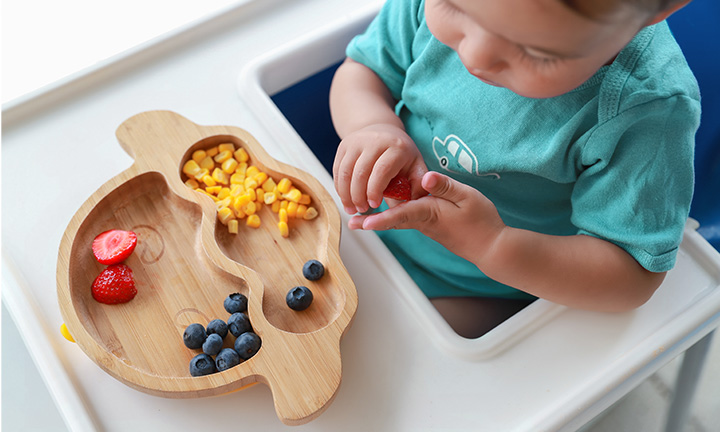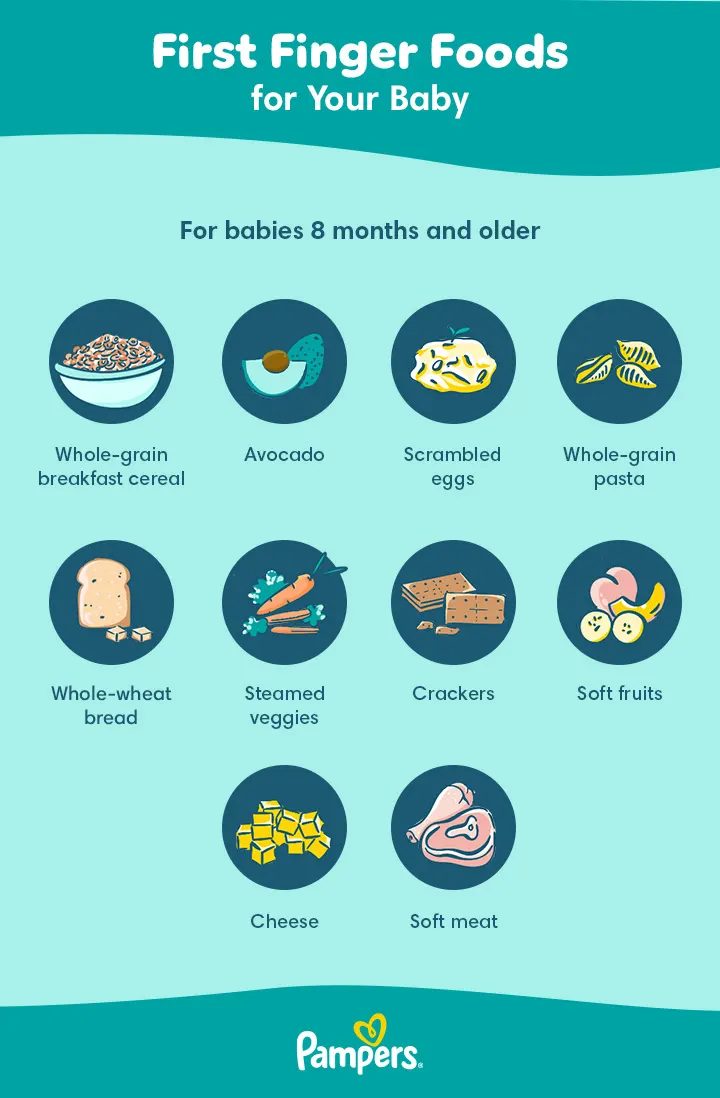
The Best Finger Foods for Babies
The transition from mushy foods to solid finger foods is a big step in your little one’s development. At this stage, it’s completely natural for you to have a lot of questions. Wondering whether your little one is ready for finger foods? Or whether it’s the right time? Check out the following article to find answers to these questions and more. We’ve also added a handy list of the best finger foods to help your baby explore the world of food.
Introducing Finger Foods to Your Baby
Introducing your baby to solid foods is often referred to as weaning or complimentary feeding. As these names suggest, it doesn’t involve an instant transition from breastmilk or formula to solid foods, but rather a gradual introduction to a varied diet.
You can start to introduce finger foods in your baby’s diet when they’re around 6 months old. This age tends to coincide with the time your baby starts to develop fine motor skills such as their pincer grasp and making chewing motions. Combined with the ability to sit up, these are great indications that your little one is ready to start venturing into solid foods.
We can all be a little fussy when it comes to food. The same applies to our little ones. It may take 10 tries or more for your baby to accept a new food. Perseverance is key. You can always try introducing new foods one at a time to let your baby get used to them in their own time. Some believe this approach can decrease fussiness when it comes to introducing new foods, including finger foods, to your baby. We recommend consulting your child’s GP if you’d like to learn more about this approach.
Some parents prefer to try baby-led weaning over spoon feeding. Giving your baby finger foods can help your little one learn to feed themselves, marking another step toward gaining independence. What’s more, self-feeding can be a fun new activity for your baby. Sure, a good amount may end up on the floor. But the fact that they’re embarking on this new exciting step in their development is something to be proud of.
First Finger Foods for Your Baby
Check out the following list of fingers foods for some inspiration:
It’s important that finger foods are cut up into pieces big enough for your baby to hold in their hand with a bit sticking out. As a rule of thumb, the pieces should be around the size of your finger. This reduces the risk of choking.
Finger Food Safety
During this time babies are more likely to swallow foods without chewing them, whether they have a few baby teeth coming in or they have no teeth. There is a difference between gagging and choking. Gagging is a completely normal reflex and typically loud. Choking, on the other hand, is quiet. It is often accompanied by the following symptoms:
Avoid giving any finger foods that require a grinding action to chew (this type of chewing is typically mastered around the age of 4), as these may pose a choking risk.
Offer finger foods that are soft, easy to swallow, and broken or cut into pieces that your baby cannot choke on. A good rule of thumb is that soft and mushy finger foods are safe for your baby. Small, round, coin-shaped, hard, chewy, crunchy, slippery, or sticky foods may lead to choking.
Here’s a list of foods you should avoid giving your little ones and the reasons why:
Note on Food Allergies
The NHS recommends introducing foods that can trigger allergic reactions one at a time and in very small amounts so you can stop any reaction. This approach can help reduce your baby’s chances of developing food allergies later on. However, if you notice any sneezing, a runny nose, wheezing, a red, itchy rash or a worsening of asthma or eczema, your baby may be allergic to these foods.
The following foods may trigger an allergic reaction:
If your baby does not react to them, these foods should be introduced to your baby’s diet from around 6 months. Your baby is more likely to be allergic to these foods if
We recommend talking to your health visitor of GP if any of the above apply to your little one.
FAQs AT A GLANCE
Soft cooked veggies; soft cooked fruits; cooked starchy foods; pulses; fish and meat without bones; hard-boiled eggs; and sticks of pasteurised full-fat cheese are all great foods to introduce to your baby’s diet. It’s important to make sure that whatever you’re serving is cut into small pieces so that your baby doesn’t choke on a piece that’s too big.
The Bottom Line
You can start to introduce finger foods in your baby’s diet when they’re around 6 months old. This age tends to coincide with the time your baby starts to develop fine motor skills such as their pincer grasp and making chewing motions. Combined with the ability to sit up, these are great indications that your little one is ready to start venturing into solid foods.
In the beginning, you’ll want to introduce finger foods that are soft and easy to swallow, since babies at this age tend to swallow instead of chew even if they have a few baby teeth. Soft cooked fruit and vegetables are great options. You can also introduce cooked starchy foods, like potato, sweet potato, pasta, noodles and rice, provided they are cut into small pieces.
Avoid raw jelly cubes, whole nuts and peanuts, and other foods that aren’t small, round, coin-shaped, hard, chewy, crunchy, slippery, or sticky. All these items can pose a choking hazard.
Transitioning to finger foods marks a big step in your baby’s development and independence. It might be a little messy at first, but you’ll both get the hang of it soon enough. Learn more about developmental milestones for your 6-month-old baby.
The information in this article is based on the expert advice found in trusted medical and government sources, such as the National Health Service (NHS).The content on this page should not replace professional medical advice. Always consult medical professionals for full diagnosis and treatment.
Read more about Baby
Related Articles
Join Pampers Club and get:







